Young professionals featured in our GEN Z Series have displayed great commitments and creativity to adhere to the stringent process to become part of our GEN Z Community. Our GEN Z Series is once-in-a-lifetime golden opportunity for younger professionals to get global exposure by unleashing their design creations to attract the attention of seniors and renowned firms across the world. Many youngsters have faltered with their incomplete submissions to miss the golden opportunity. Yes, we are very stringent to promote 100% committed individuals, who show integrity, respect towards our instructions and guidelines for submission and are truly professionals to be on ‘zerobeyond – the new frontier!’
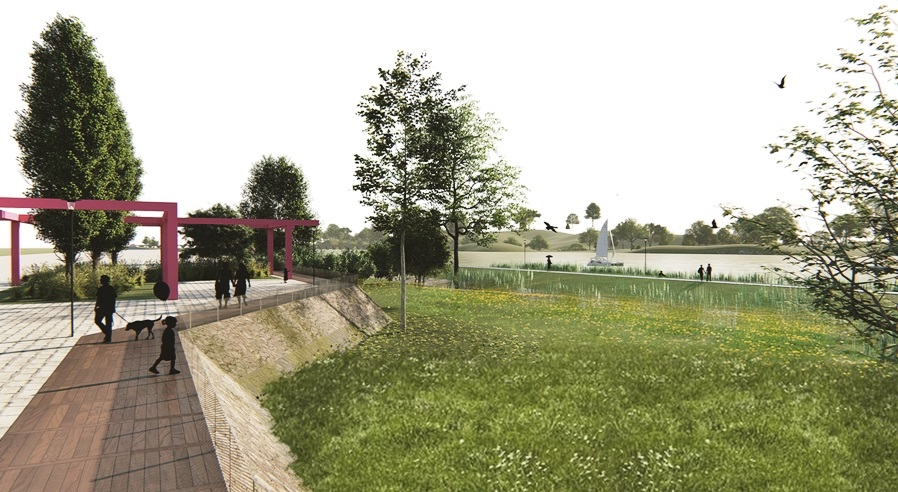
Dyke continuing as Public Plaza
From the Garden City Bangalore in Karnataka State, the GEN Z Series travels to the City of Pearls Hyderabad in Telangana State, India to meet Landscape Architect Apoorva Sukathirtha. She is currently working at Total Environment Building Systems Pvt. Ltd., Hyderabad. Having completed her B. Arch from Acharya NRV School of Architecture, Bangalore in 2017 – Apoorva Sukathirtha completed her Masters in Landscape Architecture from Politecnico di Milano in the year 2022. Interestingly, Apoorva Sukathirtha hails from Bangalore.
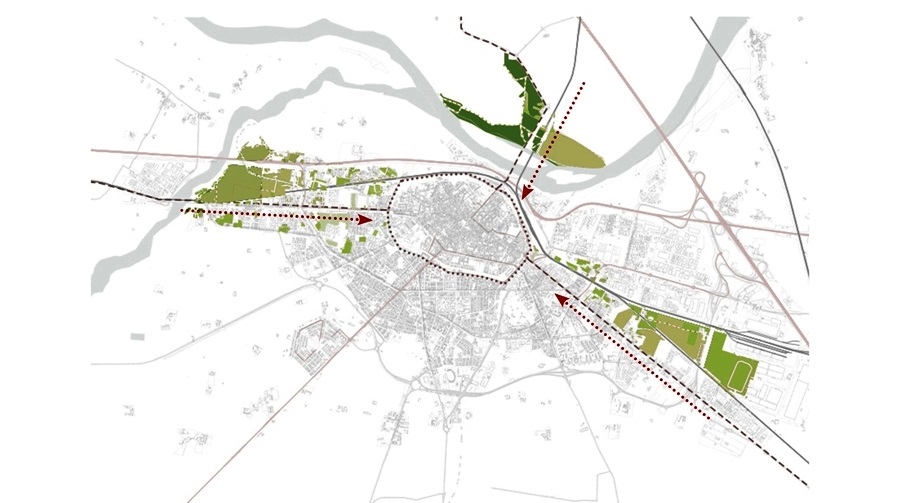
Peri-Urban Green Concourse
Apoorva Sukathirtha reveals, “I grew up in a deeply traditional South Indian family in Bangalore, alongside my parents, grandparents and elder brother. My father is a retired Finance Director and my mother is a devoted homemaker. During my graduation, I developed a keen eye for the intricate details of Indian structures and gained a profound appreciation for our country’s cultural heritage. For my Masters, I went to Milan, where I delved into the intricate relationship between land, landscape heritage and urban development. This experience underscored the significance of integrating nature-based solutions into Europe’s evolving neighborhoods.
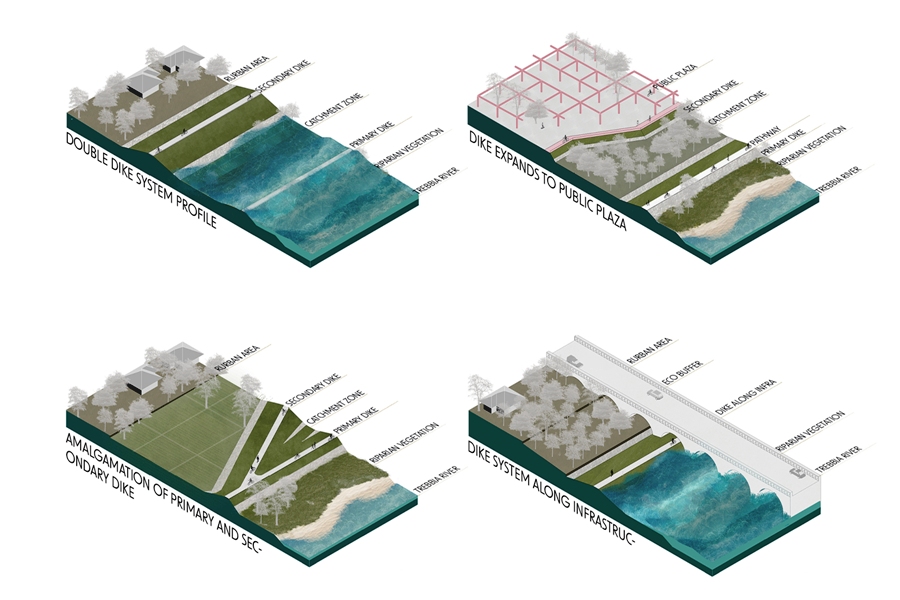
Adaptive Dyke Scenarios
Evolving amidst a blend of traditional values and modern urban influences, the experience instilled in me a deep respect for both heritage and innovation. These formative experiences have not only shaped my academic pursuits, but also fueled my commitment to promoting sustainable practices and preserving cultural legacies in architectural and environmental contexts.” True to her words, Apoorva Sukathirtha, she shares her Master’s Thesis ‘A New Rur-Ban Linkage Pattern of Anti-Fragile Landscapes along River Trebbia, Piacenza, Italy’. Johnny D has a lively interaction with Apoorva Sukathirtha about her quest in the world of architecture and landscape architecture.
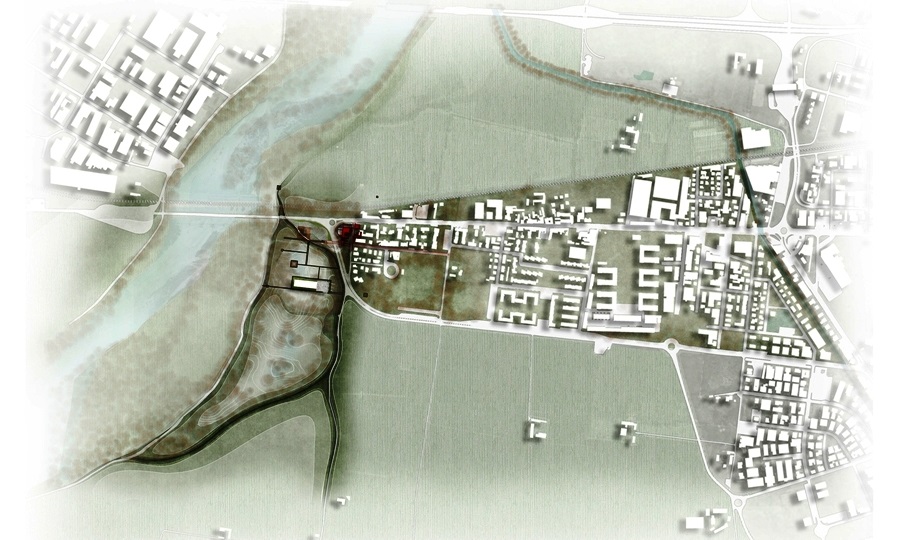
Double Dyke System – Piacenza Rur-ban
What was your childhood ambition? Did you always wanted to become a landscape architect?
Growing up in India, I immersed myself in a diverse tapestry of landscapes and architecture that ignited my passion for the built environment. From ancient temples adorned with intricate carvings to modern skyscrapers soaring high, each structure told stories of cultural richness and innovation. I gained insights into the beauty and functionality of design. The tranquil gardens of Mughal Palaces and the lush hills of the Western Ghats showcased nature’s diversity, inspiring me to create sustainable spaces that blend harmoniously with their surroundings, driven by India’s rich cultural and ecological fabric.
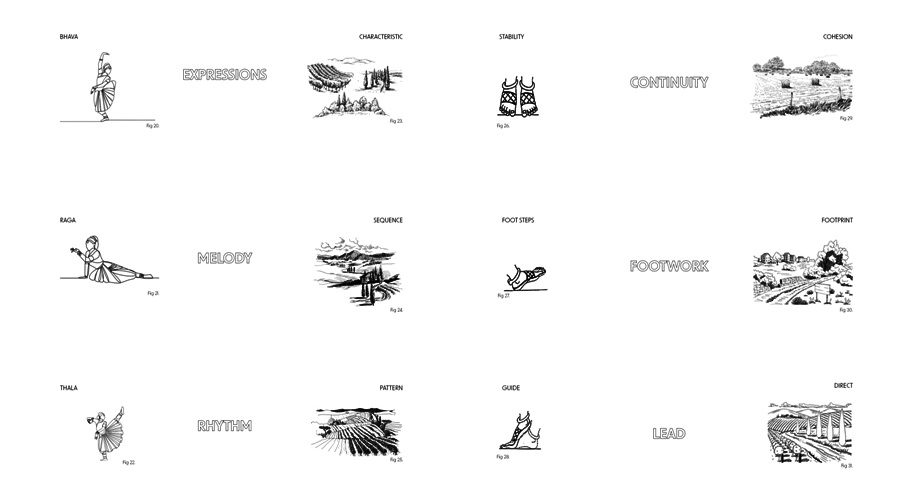
Dance and Landscape
How has landscape architecture influenced your life as a student?
Studying landscape architecture profoundly shaped my perspective as a student, going beyond mere design to understanding how environments shape human experiences. Each project delved into the intersection of nature and urban life, emphasizing sustainability and community impact. Through studio work and field studies, I learned to appreciate landscapes as living systems intricately connected to culture and ecology. This discipline fueled my passion for creating spaces that enhance well-being and foster a sense of place, guiding my aspirations and enriching my academic journey.
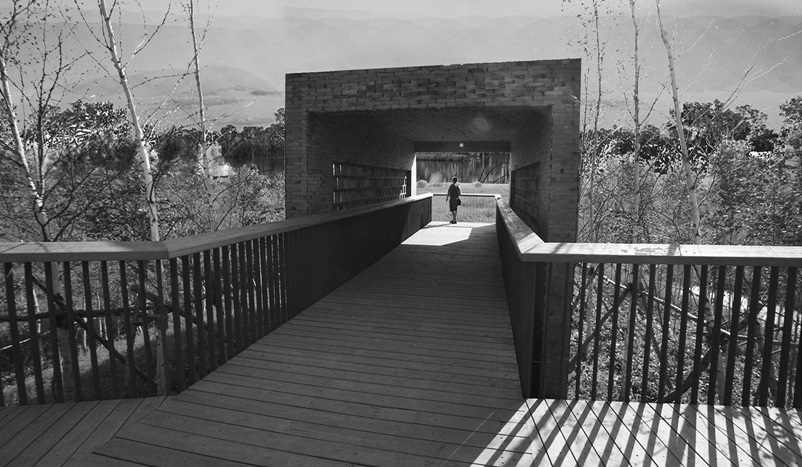
Opening to the Ecological Edge
Briefly tell us about your University and the Master’s Course.
At Politecnico di Milano, pursuing Landscape Heritage for my Master’s degree was transformative. The program immersed me in a blend of history, conservation and contemporary design, focusing on preserving and revitalizing landscapes rich in cultural significance. From iconic Italian gardens to UNESCO World Heritage sites, each lecture and field study deepened my understanding of how landscapes embody history and identity. Collaborating with experts and peers from diverse backgrounds enriched my perspective on sustainable stewardship and adaptive reuse, equipping me to innovate while preserving global heritage and shaping landscapes for future generations.
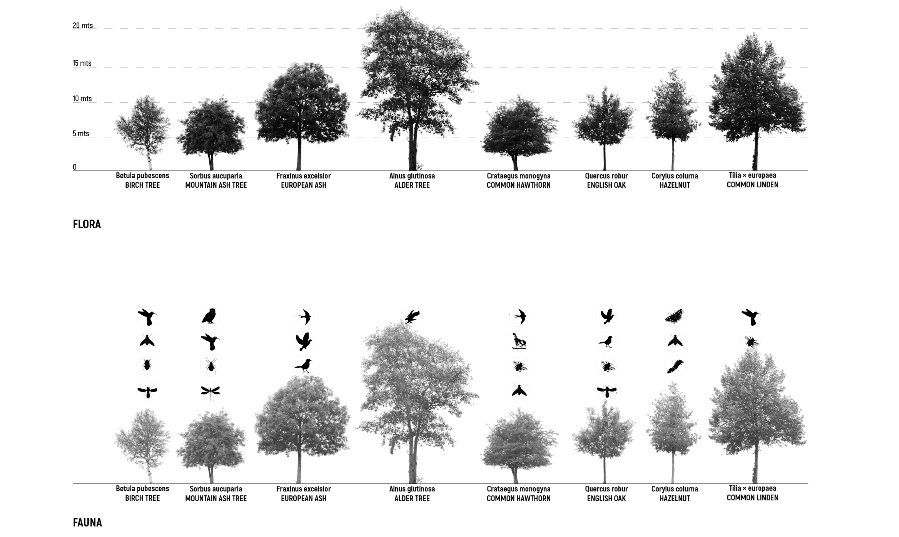
Biota of Researched Areas
Briefly describe the significance of your project with the ‘Title of the Project and Site Location’.
Project title: ‘A New Rur-Ban Linkage Pattern of Anti-Fragile Landscapes along River Trebbia’: Site location: Piacenza, Italy
In pursuit of a sustainable future, safeguarding the delicate landscape along river Trebbia from water flow disruptions and local damage was paramount. Mitigating floods required fostering anti-fragility – a landscape resilient and adaptable to challenges. Extensive research on nature-based solutions and local materials led to the development of an optimal dike system. Unlike conventional concrete walls, this approach utilized earthen embankments fortified with rocks and vegetation, preserving rural integrity while enhancing water absorption and reducing intrusion.
The predominantly agricultural Trebbia Valley, with residential settlements near the river, necessitated flood protection beyond riparian barriers. An innovative double dike system was designed, featuring two parallel dikes with a floodplain between them to store excess water and mitigate urban flooding risks.
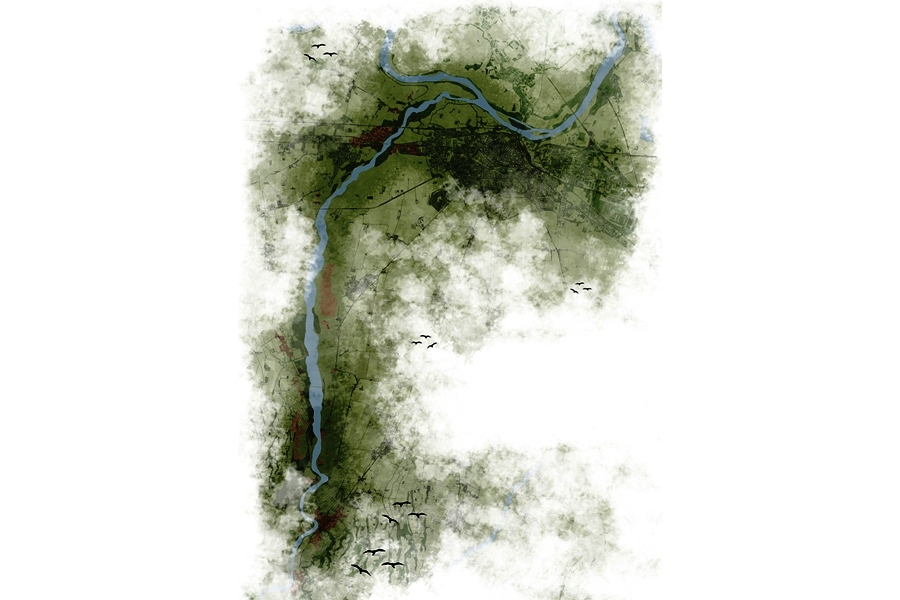
Rur-ban Linkage of Anti-Fragile Landscapes
Integrating these measures into the local ecosystem posed challenges. The project strategically divided functions into functional, educational and recreational sectors, each enhancing the landscape in unique ways. The initiative systematically analyzed the urban fabric using grid modules, integrating green and grey infrastructure to revitalize urban areas and enhance sustainability.
This holistic urban design project incorporated effective flood mitigation strategies, such as double dikes and a multipurpose sponge park. An ecological urban grid promoted sustainability through green corridors, pedestrian pathways and nature-based solutions. Green roofs and bioswales attenuated stormwater, improved water quality and fortified urban resilience, thereby exemplifying innovative solutions to urban flooding challenges.
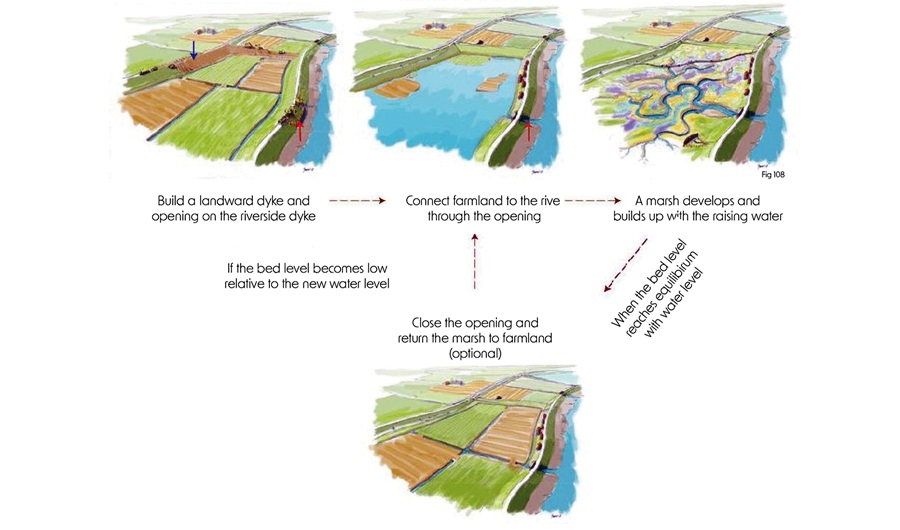
Double Dyke System
As an Intern, what is the most important lesson(s) you have learned from senior architects, while being a part of a project?
As an intern, the most crucial lesson learned from senior architects was the value of meticulous attention to detail. They emphasized how every decision, from concept to execution, impacts project outcomes and client satisfaction. Effective communication and collaboration within multidisciplinary teams were also emphasized, underscoring the importance of holistic thinking and continuous learning in architectural practice, shaping my approach to future projects and professional growth.
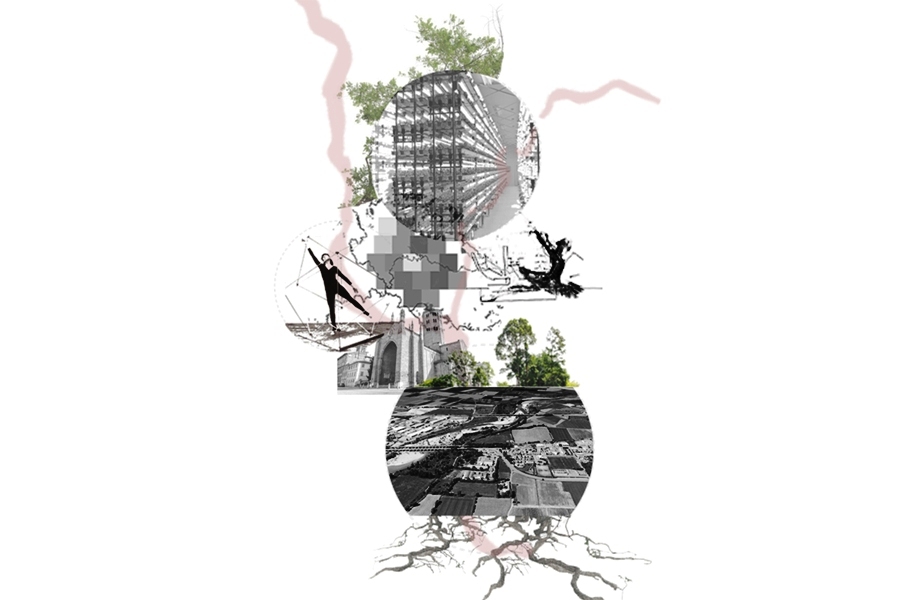
Horizontal Solidarity of Landscape Infrastructure
Which National or International landscape architect has inspired / influenced you? Please specify as to why?
Martha Schwartz, a landscape architect, significantly influenced me with her bold and innovative approach to urban landscapes. Known for seamlessly blending art, ecology and social engagement, her designs transform urban spaces into vibrant sustainable environments. Schwartz’s emphasis on creating emotionally evocative spaces that foster community deeply resonates with me. Her advocacy for integrating nature into the built environment and pioneering use of unconventional materials inspires me to push boundaries in my work, striving to create landscapes that enhance quality of life and environmental sustainability.
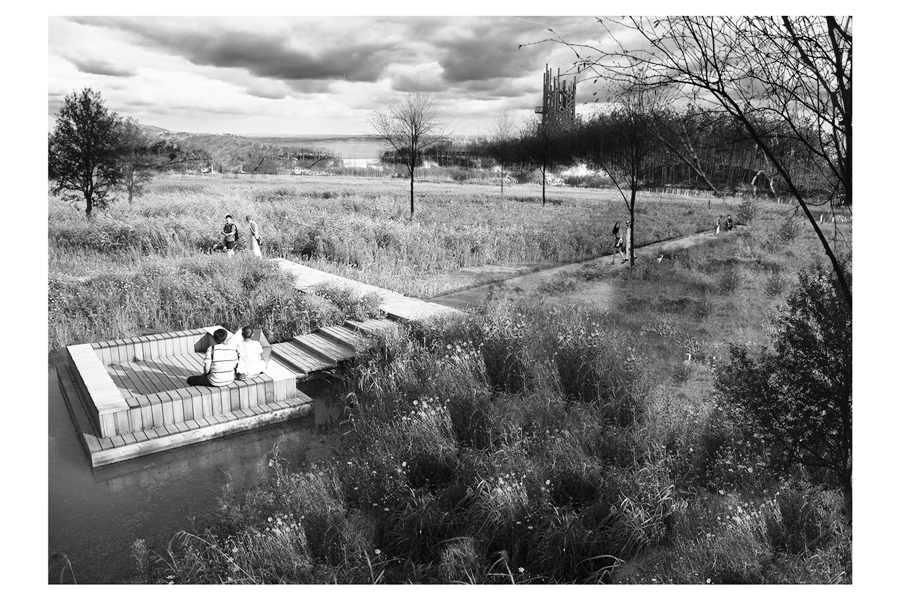
Intimate-Experience Decks at Sponge Parks
What role do you perform at Total Environment Building Systems Pvt. Ltd., Hyderabad as a Landscape Architect?
As a Landscape Architect, I am responsible for harmoniously integrating natural elements with built environments. My role involves conceptualizing and designing outdoor spaces that enhance aesthetic appeal, functionality and environmental sustainability. Collaborating closely with architects, engineers and clients ensures alignment of landscape designs with project goals and client vision. I conduct site analysis, develop planting plans and oversee implementation to ensure quality and adherence to environmental standards. By blending creativity with technical expertise, I aim to create landscapes that enrich the user experience while promoting ecological balance and urban resilience.
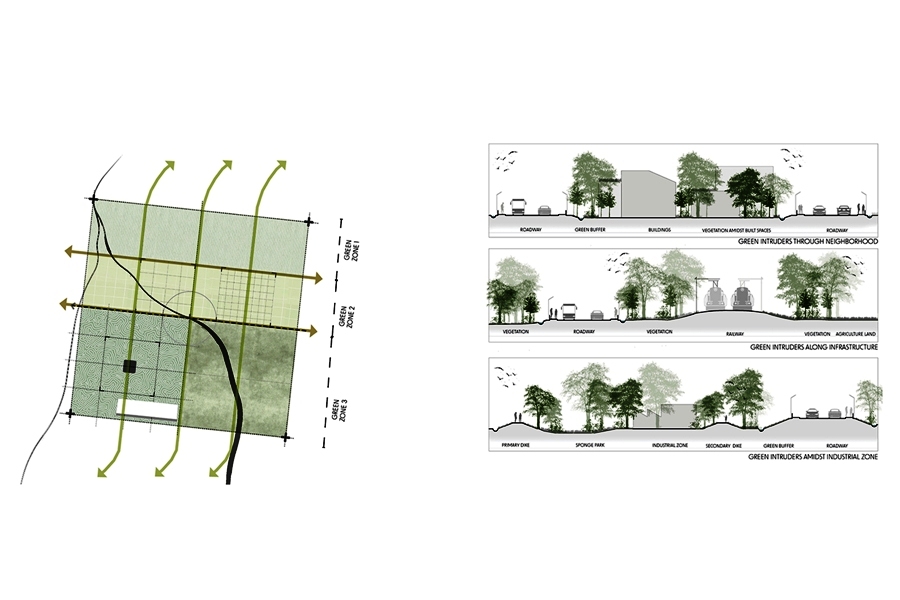
Green Intrusion
Hostile architecture is an eyesore and fast changing the urban landscape of prominent cities around the world creating discomfort to public. Architecture is meant to benefit the people/users at large, but the effects of hostile architecture are targeting people and depicting callousness of the society and is against the ethos of architecture field. Elucidate your perspective about this unwanted trend in urban landscape.
In my view, hostile architecture represents a troubling shift in urban design, prioritizing exclusion over inclusivity and safety. This trend contradicts architecture’s fundamental purpose – to serve and enhance communities – by deliberately discouraging public use through uncomfortable and discriminatory features. Hostile architecture undermines social cohesion and reflects a broader disregard for public welfare and equitable urban spaces. Architects must advocate for designs promoting accessibility, comfort and human dignity, thereby resisting the encroachment of hostile architecture in our surroundings.
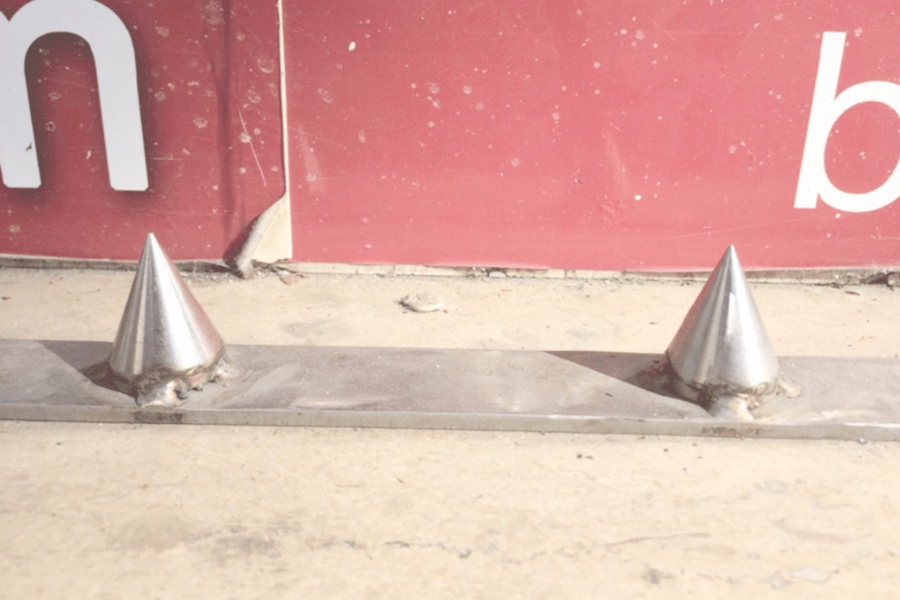
Inherently Hostile Anti-Loitering Spikes, Paris
Which significant aspects of the global platform ‘zerobeyond – the new frontier!’ did you liked the most, and why?
‘zerobeyond – the new frontier!’ embodies a visionary initiative encompassing architecture, engineering and interiors. Its rapid global growth to achieve “World’s Fastest Growing Website” status in the ‘Architectural Design World’ is intriguing! The platform distinguishes itself through dedication to innovation and sustainability, showcasing cutting-edge technologies and fostering global professional collaboration.
The global platform’s expansion underscores a pivotal role in shaping sustainable design and urban development, providing essential insights for architects, engineers and interior designers committed to environmental stewardship. Particularly noteworthy are the Gen Z Series interviews and articles, thereby sparking a trend and offering young professionals a platform to showcase work and express their perspectives without prejudice.
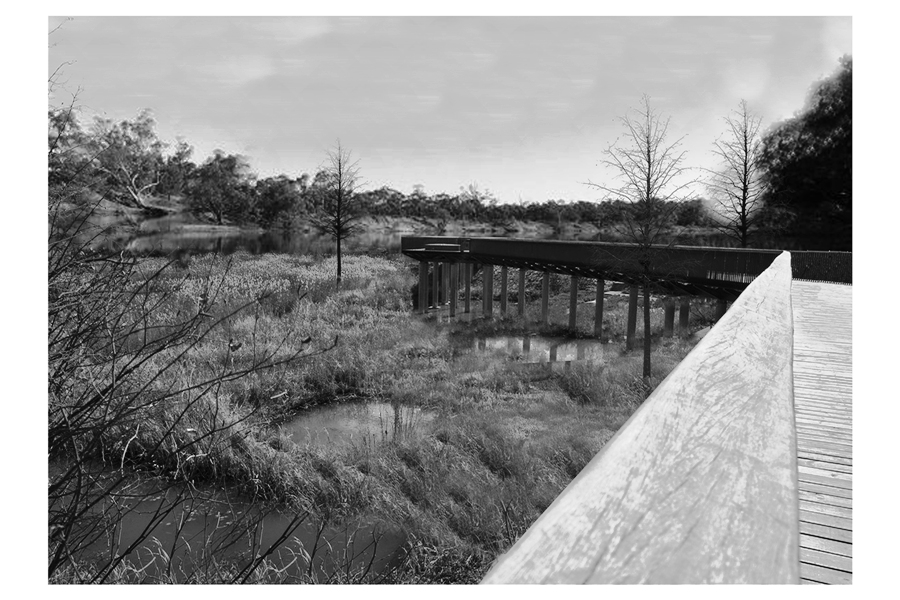
Pathways Exploring Diverse Ecosystems
Local charm of cities has diminished due to Modern Architecture as every city looks alike and similar. How should architects / urban planners / landscape architects modernize cities, while maintaining the local charm intact?
Architects, urban planners, and landscape architects can modernize cities, while preserving local charm through contextual design. Integrating modern innovations with elements reflecting the city’s history, culture and natural surroundings enhances authenticity. Utilizing local materials, respecting traditional building styles and incorporating native flora in urban green spaces are vital. Community engagement and stakeholders’ inputs ensure understanding and integration of local preferences into design decisions. Balancing contemporary functionality with respect for heritage and identity creates vibrant sustainable urban environments celebrating diversity amid global modernization.
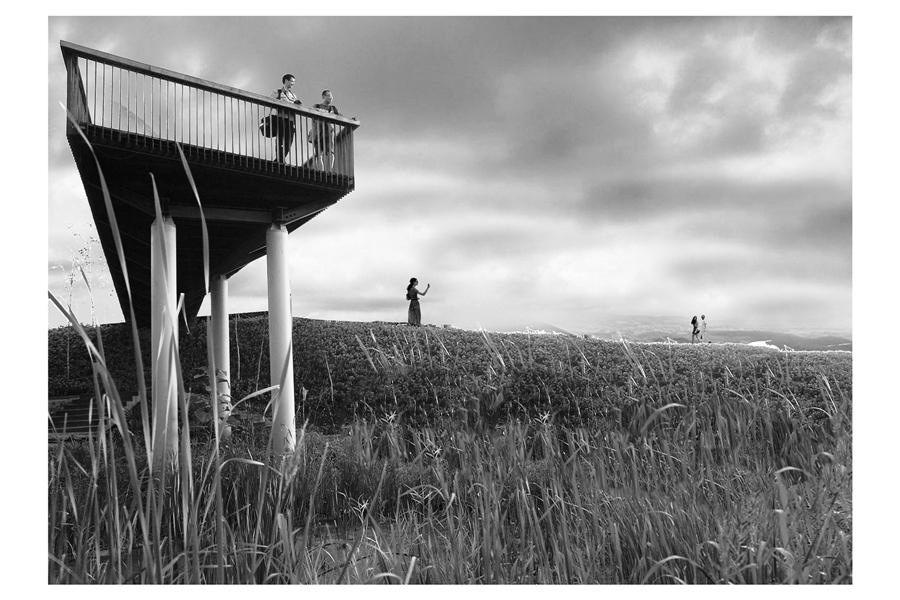
Elevated Walkways along Sponge Park
The time to save Planet Earth from climatic catastrophes / human greed crisis has already slipped away from humans’ hands. Elucidate your views how the future of your generation is going to rise above the past generations to tackle this existential crisis?
The urgency to save Planet Earth from climatic catastrophes and human greed has reached a critical juncture. My generation must prioritize sustainability, innovation and global cooperation to overcome past failures. Embracing renewable energy, advocating environmental policies and fostering eco-conscious lifestyles are essential. Harnessing technology, promoting education and engaging in collective action will forge a path toward a sustainable future to ensure our planet thrives despite challenges inherited from previous generations.
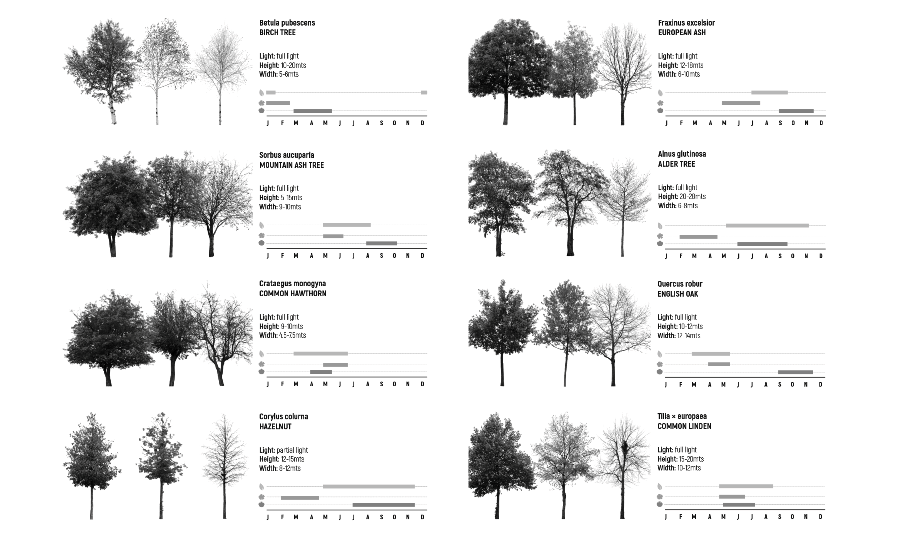
Proposed Flood-Tolerant and Native Trees
Looking at the past in the current present, what are the futuristic landscape and architectural changes you would like to see in your home city / town? Elucidate the reasons for your vision.
Looking to Bangalore’s future, I envision sustainable architectural and landscape changes prioritizing green spaces and eco-friendly infrastructure. Integrating vertical gardens, green roofs and pedestrian-friendly pathways mitigate urban heat island effects to enhance air quality. Preserving lakes and water bodies, while implementing effective rainwater harvesting to ensure effective water sustainability has become mandatory to overcome shortage of water supply. Embracing smart technologies for energy efficiency and waste management reduces environmental impact. These changes enhance the city’s aesthetic appeal, promote public health and foster a harmonious balance between development and environmental conservation. Bangalore can evolve into a model city of sustainability, leading the way for future urban environments.
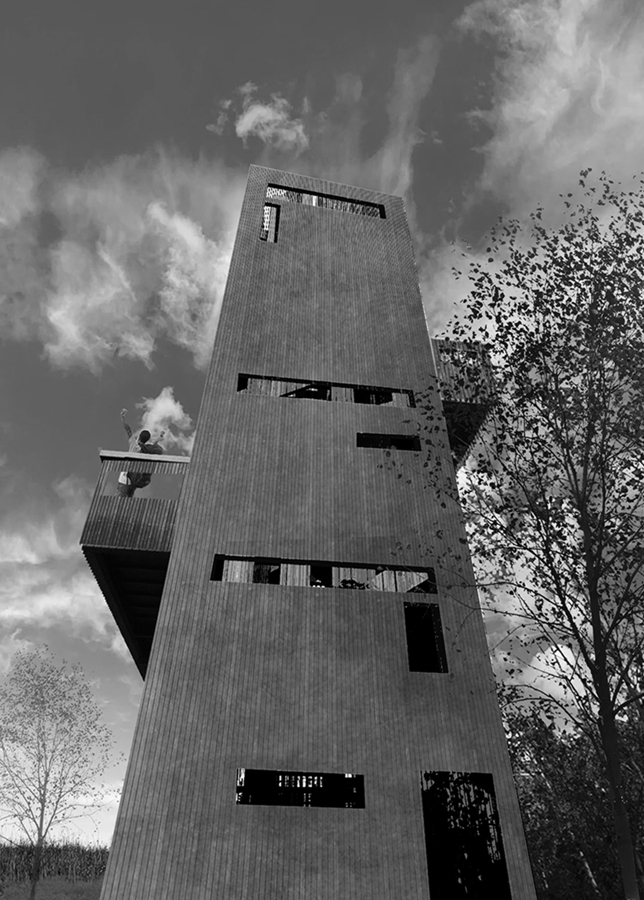
Viewing Point of Rur-ban Sponge Park
Honours and awards related to landscape architecture, if any.
I contributed to a project for Milan’s Municipality, promoting sustainable schools in the neighborhood. Our landscape architecture design introduced a new flora and fauna palette with native species, winning the top award at ‘Milan International Architecture Workshop 2022‘.

Moment of Pride
Image Courtesy: Apoorva Sukathirtha